Samsung Galaxy Z Flip 4
Samsung didn't reinvent its clamshell-style foldable, but the Samsung Galaxy Z Flip 4 looks ready to hold onto its value foldable crown.
Samsung's mid-year Unpacked event delivered everything we expected; with some new Galaxy Buds 2 Pro, a new duo of smartwatches across the Galaxy Watch 5 and Galaxy Watch 5 Pro, and a pair of foldables in the Galaxy Z Fold 4 and Samsung Galaxy Z Flip 4.
Both foldables certainly look like their respective predecessors, with the Z Flip 4 rocking a familiar two-tone clamshell form factor, a dual rear camera and an external cover display, so what is new?
Across both the Fold 4 and Flip 4, iterative refinement looks to be the name of the game, but that's especially true with regards to the Flip, which at a glance looks and handles almost identically to its predecessor.
Samsung, however, has been keen to impress the influence of its users and how user feedback has dictated what areas of the Z Flip formula the company has focused on in refining 2021's still-compelling Samsung Galaxy Z Flip 3.
Samsung Galaxy Z Flip 4 release date and price
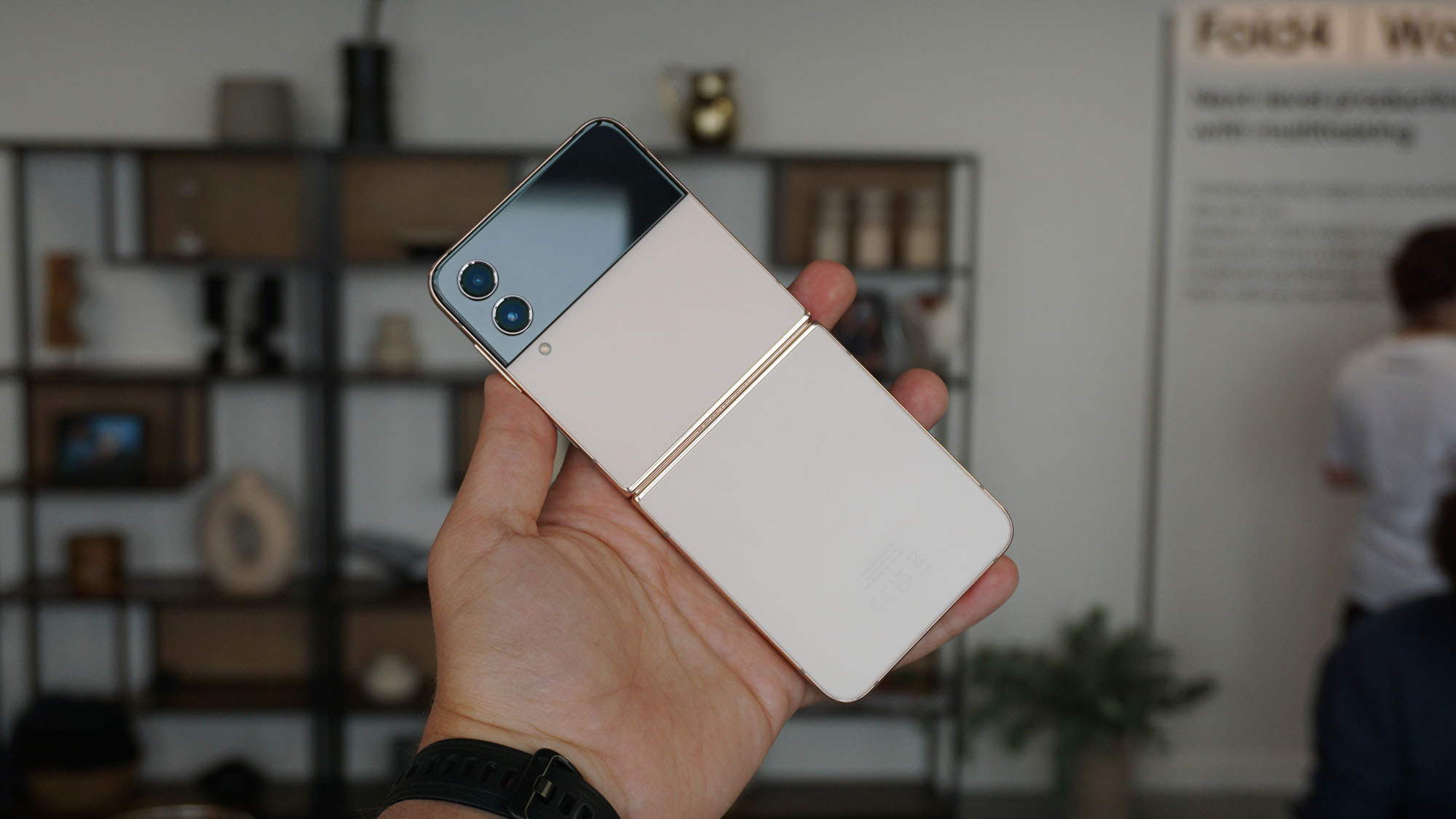
After a deluge of leaks and – nearer the official launch – a tease or two directly from Samsung, one of the world's leading mobile brands finally pulled the wraps off its latest offerings at a dedicated 'Unpacked' virtual event held on August 10, 2022.
As well as the Buds and watches already mentioned, we were introduced to an updated pair of foldables that, like their predecessors, focus on productivity and portability, respectively.
The Samsung Galaxy Z Flip 4 is set to go on sale on August 26 (September 2 in Australia), with pre-orders kicking off on August 10.
Pricing has taken a slight hike this year (in some markets at least, including the UK), no doubt driven by global economic pressures and supply chain issues – problems numerous manufacturers are facing in the current climate, and the reason behind price increases across a variety products.
- 128GB = £999 / $999.99 / AU$1,499
- 256GB = £1,059 / $1,059.99 / AU$1,649
- 512GB = £1,199 / $1,179.99 / AU$1,849
Even so, the phone still looks like to be the best-value clamshell foldables on the market. There's also a new, higher storage variant this year, giving you up to half a terabyte of space, which wasn't on the table with 2021's Samsung Galaxy Z Flip 3.
As introduced with the Z Flip 3, in some markets, fans can choose custom frame and back color pairings for their own Z Flip 4 Bespoke Edition. Available on Samsung.com and at Samsung's Experience Stores, there are a 75 combinations that users have the option to create.
Samsung Galaxy Z Flip 4 design and display
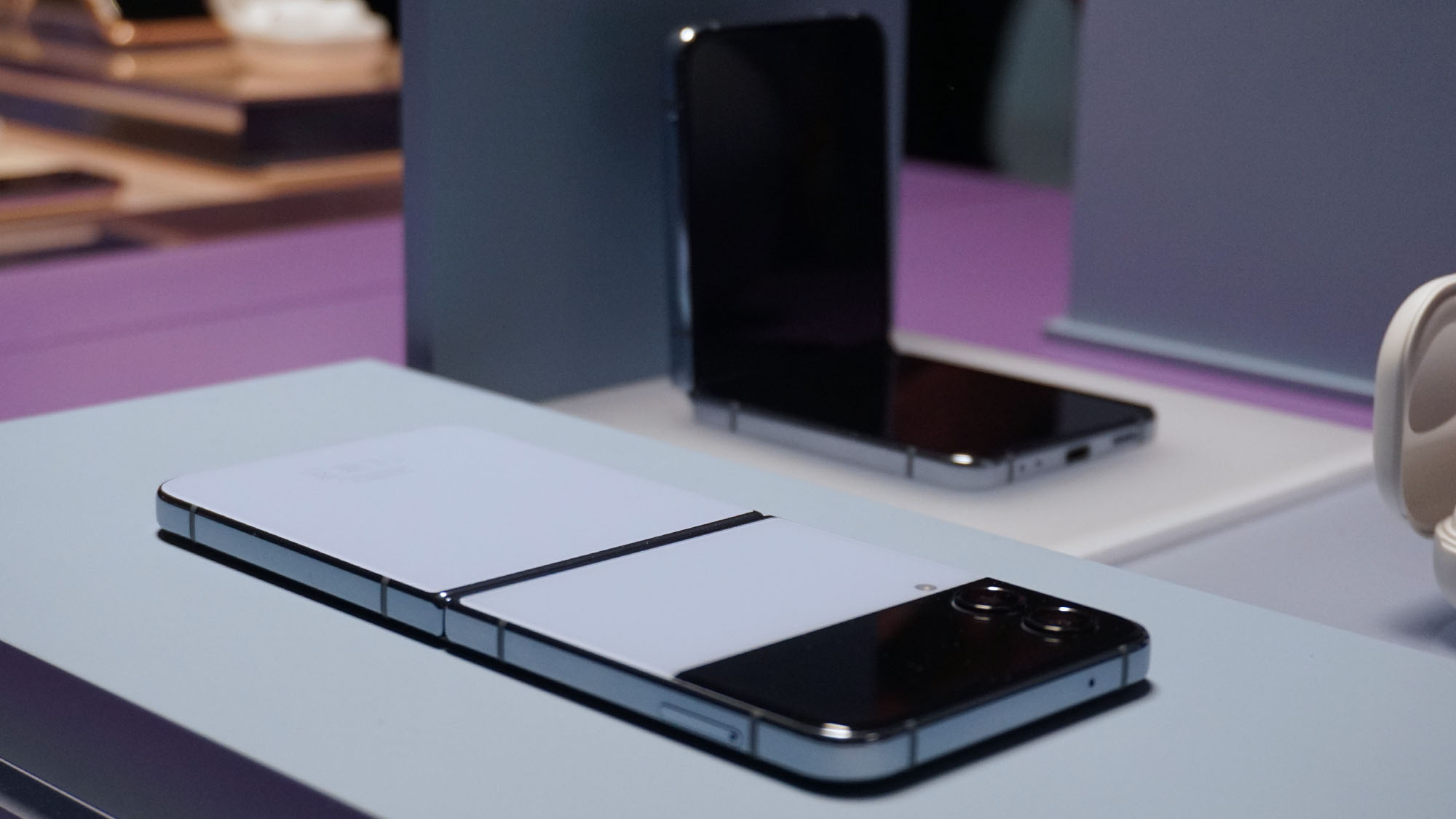
If you've seen the existing Z Flip 3, the design of the new Samsung Galaxy Z Flip 4 may not even register at first glance.
It sports the same straight-sided look, with a black 'visor' along the top edge of the back that plays host to two rear camera sensors and the external cover display, while the rest of the back is comprised of Gorilla Glass Victus, set against a complimentary, color-matched Aluminum Armor frame.
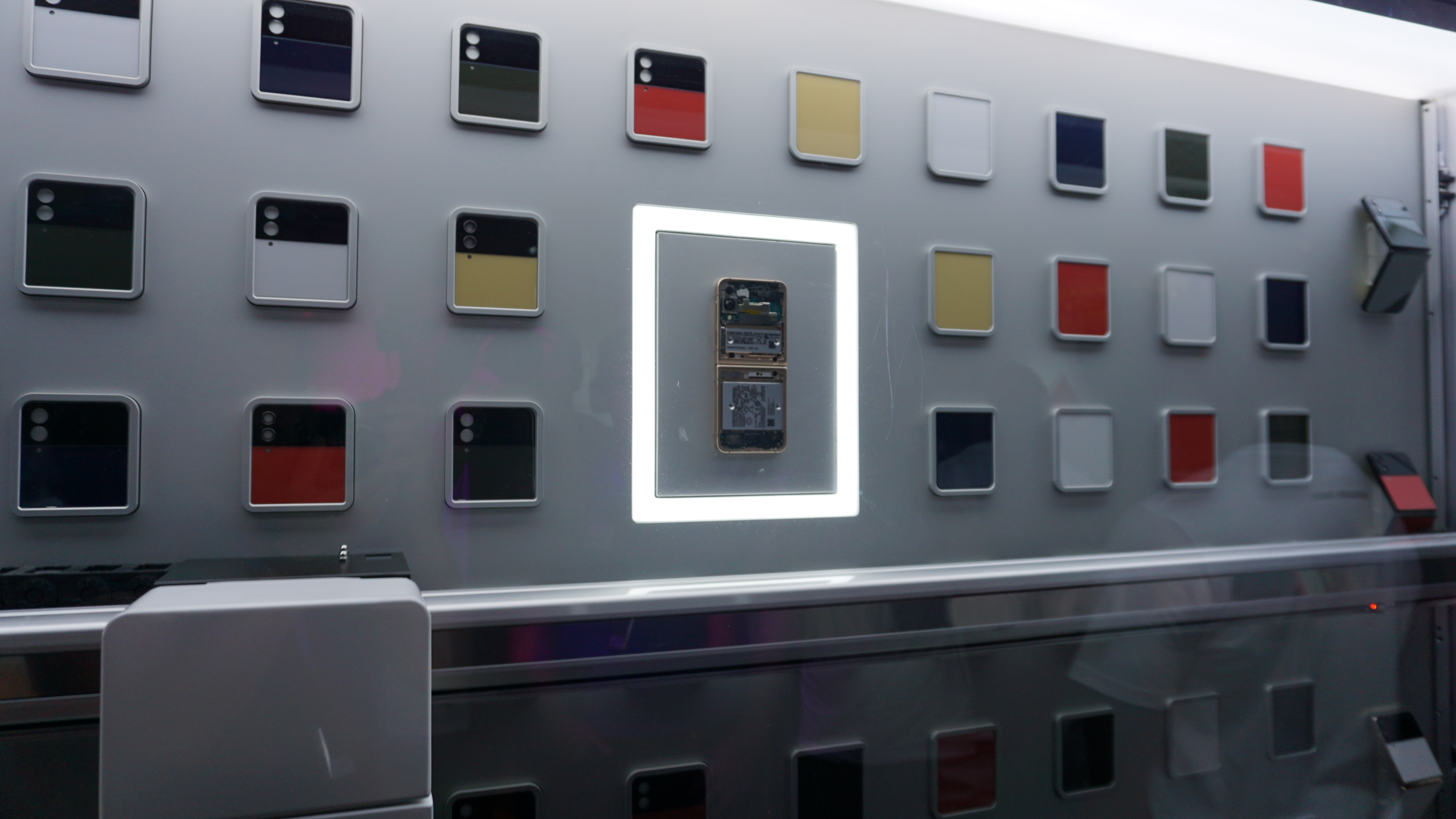
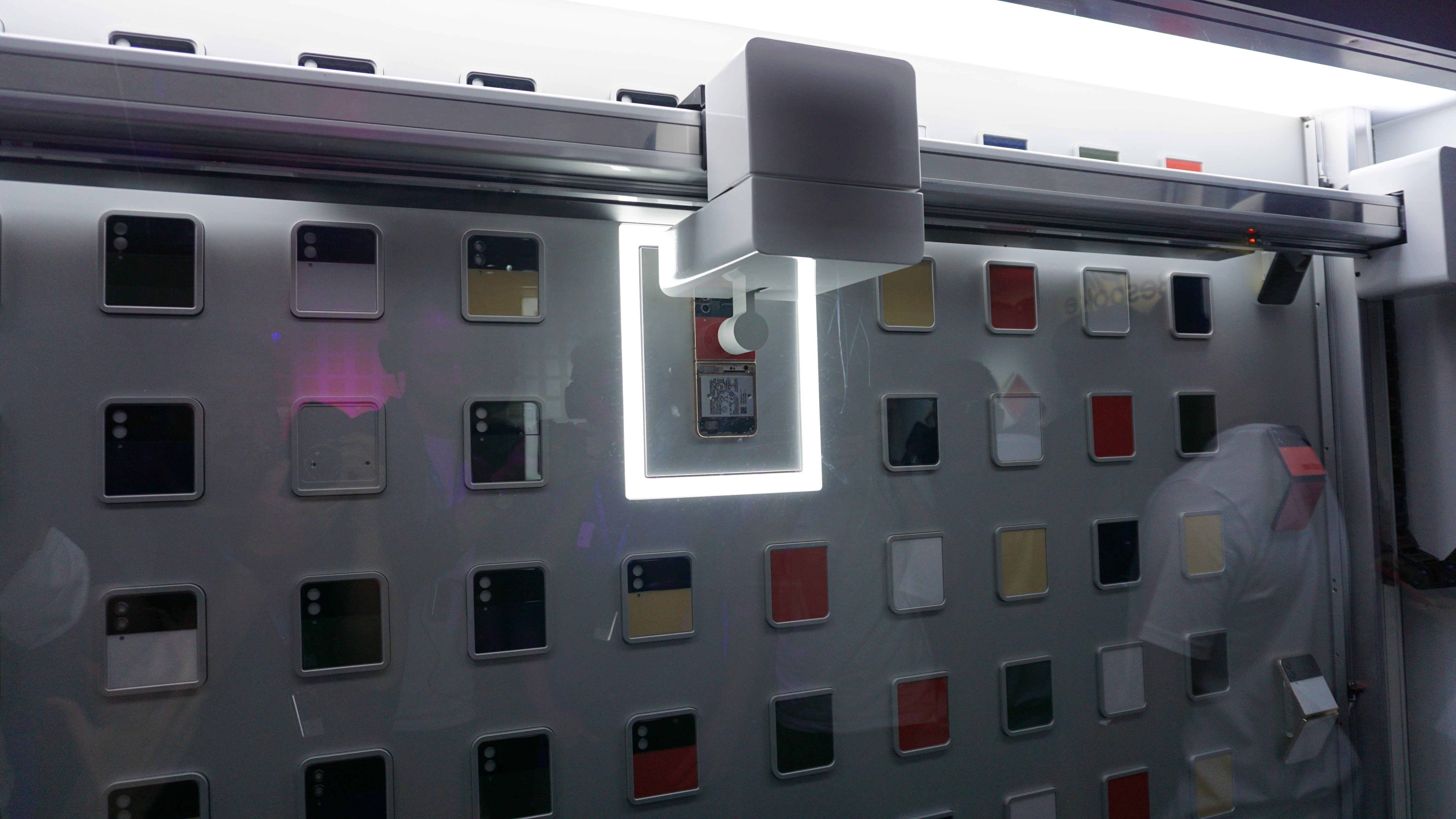
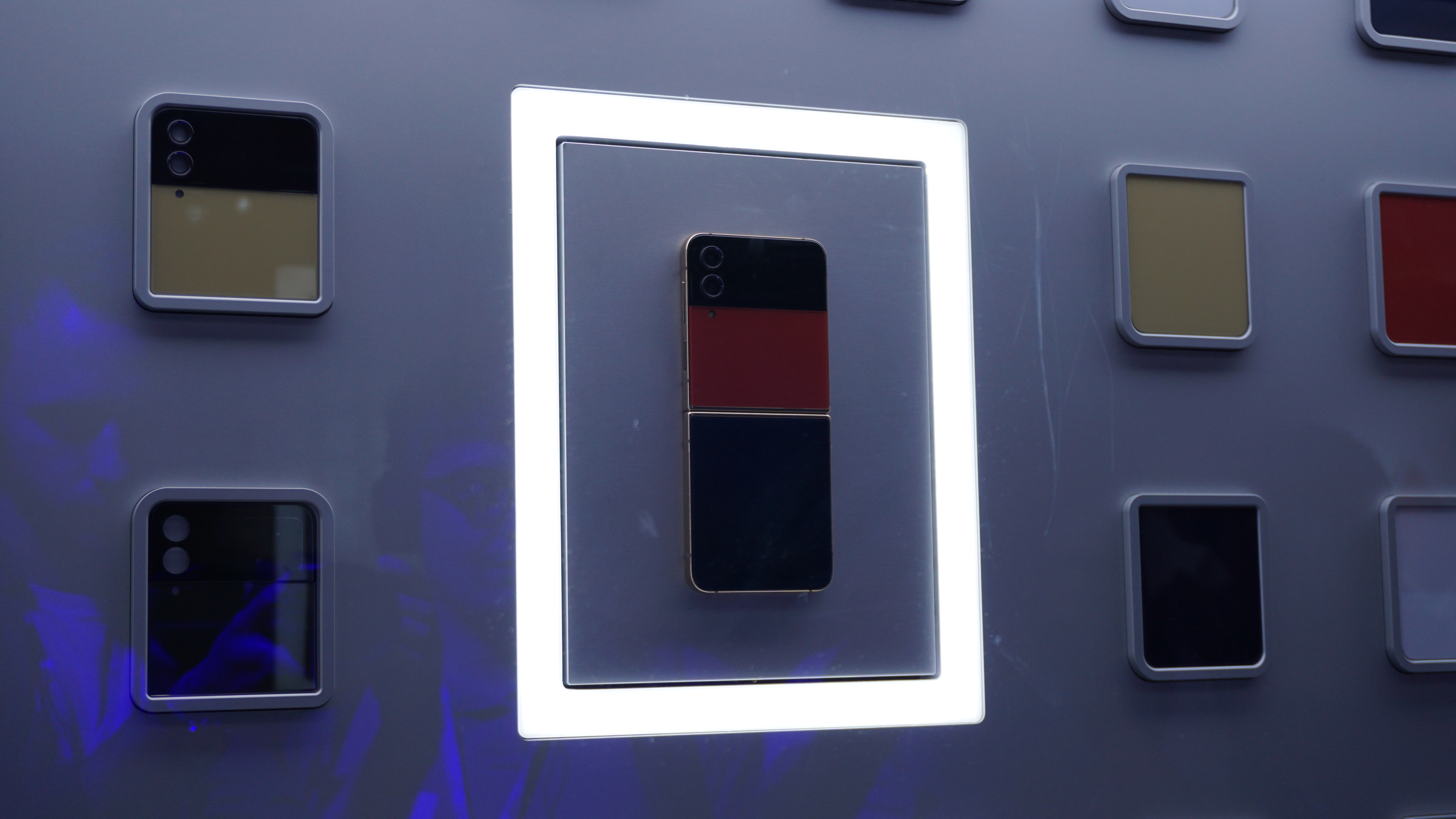
Launch colors include Graphite, Pink Gold, Bora Purple and blue, as well as the ability to mix and match both back colors and frame finishes in certain markets, if you pick up a Bespoke Edition.
Despite the same primary screen size as the Flip 3, Samsung has managed to make the Flip 4 smaller overall. When folding the phone closed, the logo-engraved hinge doesn't protrude quite as much as it did on the last model; with a folded height that's 1.5mm shorter, thanks in part to slimmer bezels (this has also made more room for a bigger battery).
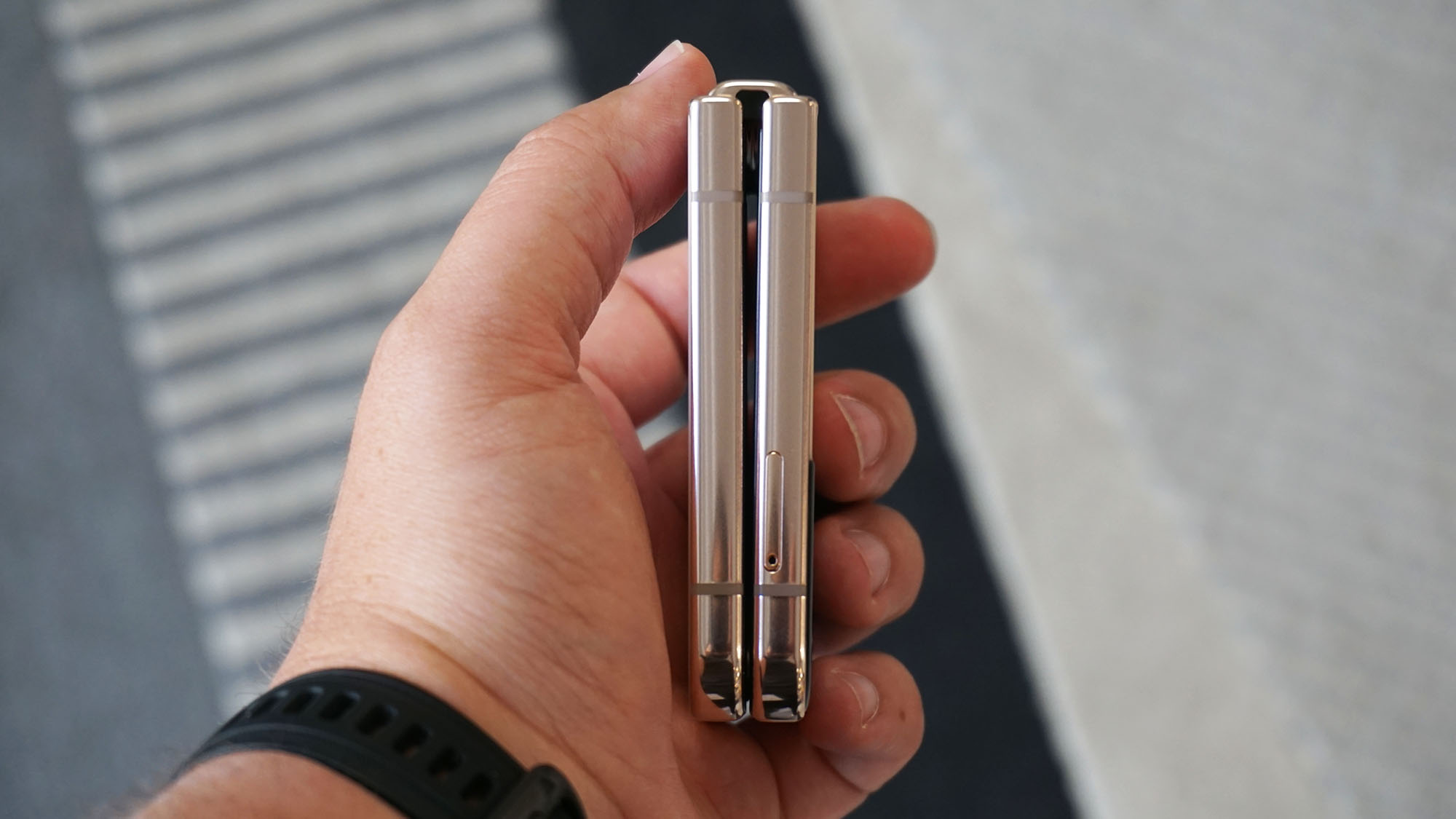
Side-on, there's still a discernible gap to protect the point at which the screen creases in half, and dust ingress is still a risk – with no certified protection against grit, however, IPX8 water resistance does return from last year's Flip and is still just as unbelievably impressive in an ever-growing market of rival foldables that still offer no such protection.
Like last year's model, you'll find a 6.7-inch Full HD+ (2640 x 1080) 'Dynamic AMOLED 2X' panel when you open up the Samsung Galaxy Z Flip 4, which sports a pleasantly smooth 120Hz refresh rate that can scale down to 1Hz in certain situations to preserve battery life.
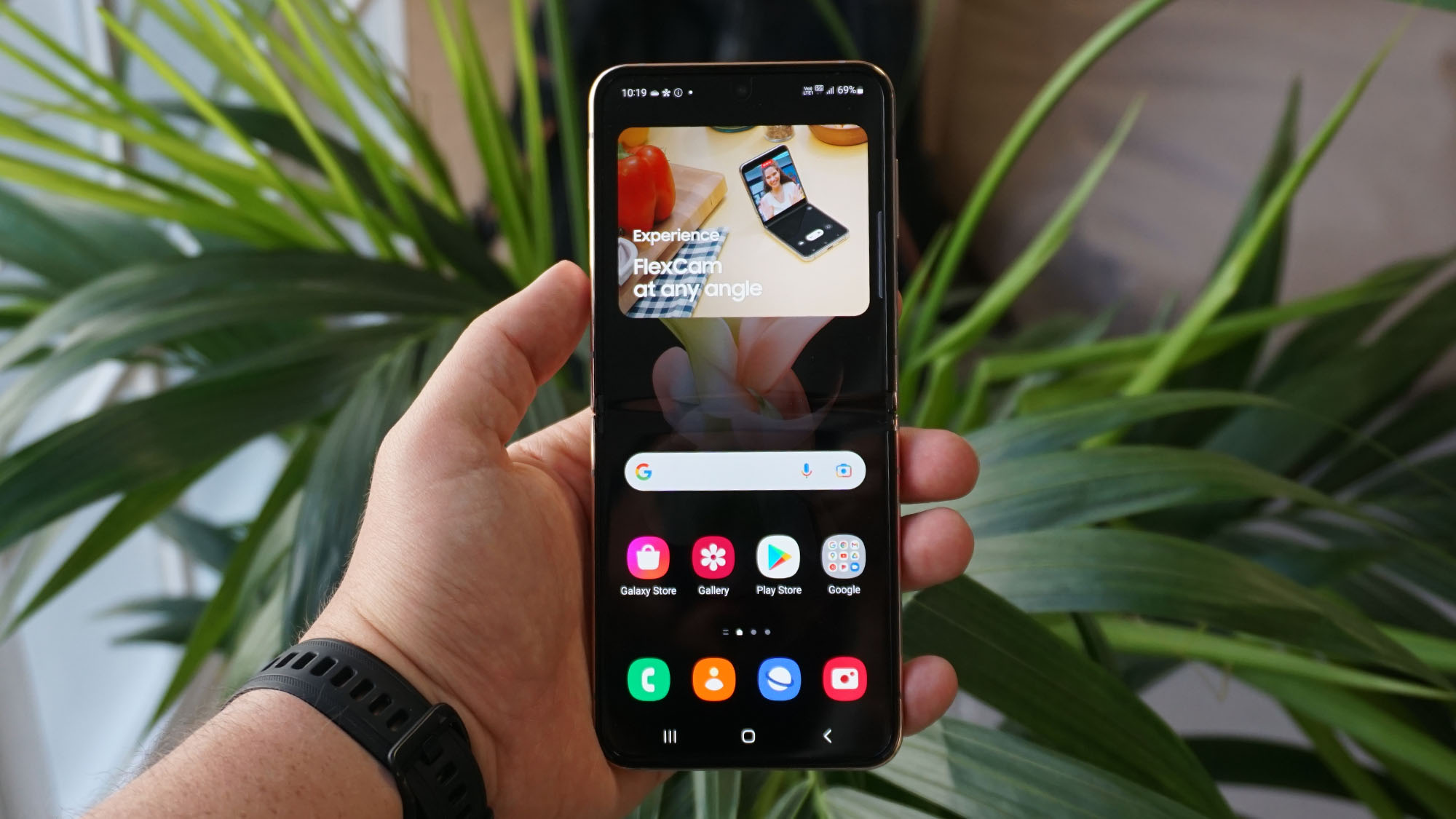
Visual quality is great for the resolution, with the crease unseen when viewed head-on and barely felt under finger, making usability almost as good as on any conventional candy bar smartphone, albeit with a decidedly unconventional 22:9 aspect ratio.
The shape does ask for two-handed use from the user a little more often, but also lends itself particularly well to split-screen multitasking and enjoying ultra-widescreen gaming or video playback.
That main screen also comes protected by a new version of Samsung's UTG (ultra-thin glass) 2.0, which the company claims is 20% stronger than before; although we can't speak to its scratch or impact resistance at this early stage.
Samsung made the external cover display larger on the Flip 3, compared to its predecessor, and that runs through to the Galaxy Z Flip 4, with the same 1.9-inch Super AMOLED panel as before, plus the same 260 x 512 resolution and 60Hz refresh rate too.
Samsung Galaxy Z Flip 4 software
Samsung has definitely expanded the Cover Display's functionality, though, with theme-matching when setting Galaxy Themes on the main display and a host of new and improved widgets: like a SmartThings smart home control panel, Samsung Wallet access, expanded quick replies, plus more general quick settings.
Flex Mode makes a return too, letting you position the Samsung Galaxy Z Flip 4's sturdy-feeling hinge at multiple angles through its full range of motion in order to gain access to a number of split-screen experiences.
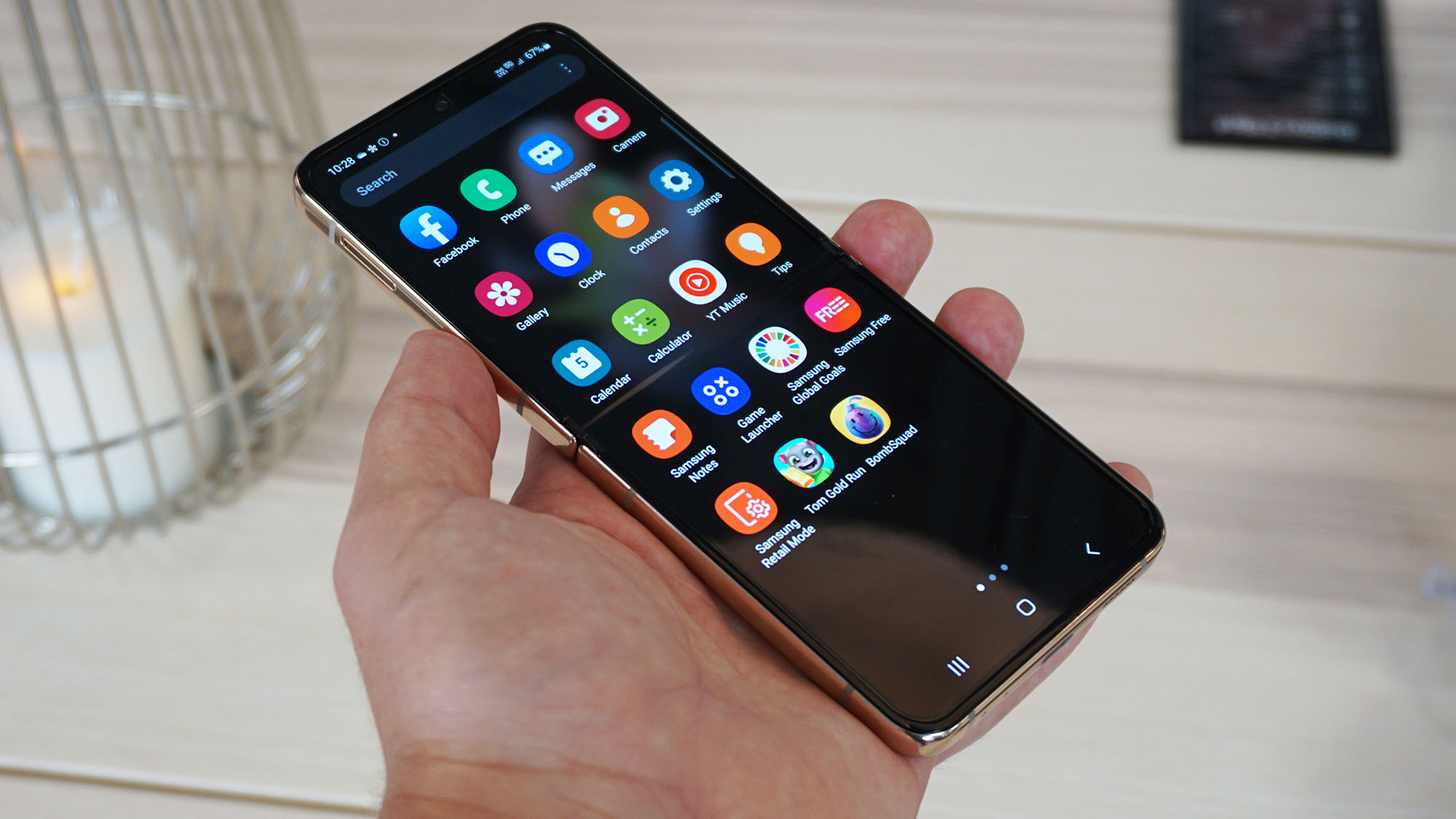
The company has built on existing offerings like YouTube and Google Duo, with apps like Meta Messaging coming out of testing to receive dedicated Flex Mode support, while features like multi-window have been better optimized for Flex Mode, with a simple gesture from the bottom of the screen to get going.
Beyond these additions and updates, which capitalize on the Flip 4's unique hardware configuration, you can expect a more familiar One UI software experience, underpinned by Android 12.
Samsung's Galaxy Store lives alongside the Google Play Store, Samsung Wallet exists in conjunction with Google Pay and although some native Android 12 features persist, they play second-fiddle to Samsung's specific implementation when it comes to UI layout and customization.
Samsung Galaxy Z Flip 4 performance and battery life
Although the Flip 4 focuses on compact portability to the Z Fold 4's productivity, it doesn't skimp on performance, with Qualcomm's latest Snapdragon 8 Plus Gen 1 silicon running the show.
That's the same chipset you'll find in the latest Android flagships, including Asus' newest Zenfone 9 and its gaming behemoth, the ROG Phone 6, although in this instance the Snapdragon comes twinned with a more modest 8GB of RAM, whereas the Samsung Galaxy Z Fold 4 features 12GB.
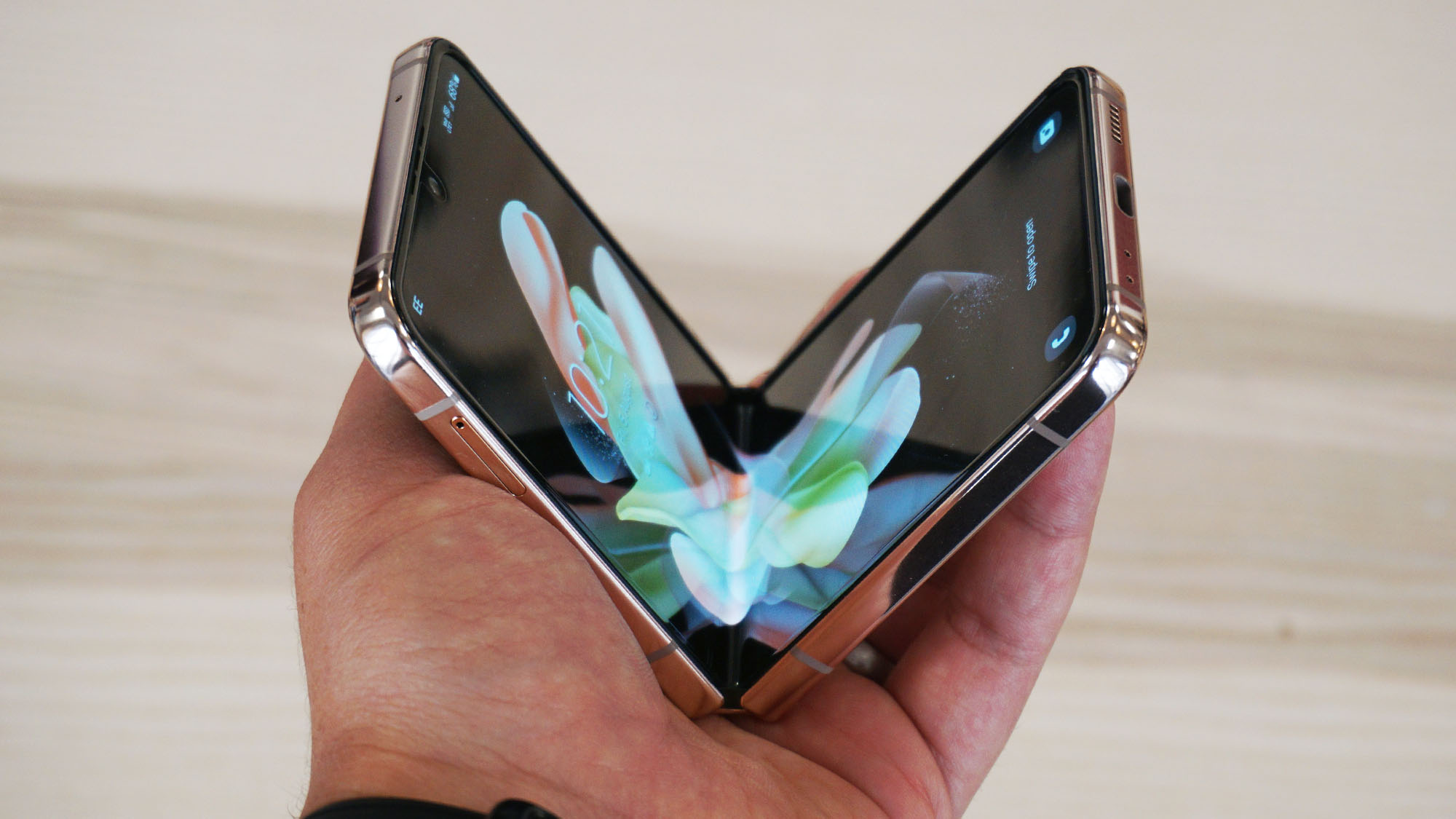
You won't find any of Samsung's own Exynos chips in this latest crop of foldables, meaning performance should be more consistent, wherever you pick one up. Some of Samsung's flagships, namely in the Galaxy S series, run on either Snapdragon or Exynos chips depending on where in the world you find them, and as result, aspects like performance and camera behaviour can vary pretty distinctly between the two versions, usually in the Snapdragon's favor.
As for battery life, while charging remains the same as on the Flip 3: support for up to 25W when wired and wireless charging at up to 15W, as a direct result of user feedback, the Flip 4 bumps the battery capacity of its predecessor up from 3,300mAh to 3,700mAh, which should allow it to more confidently make it through a day.
Samsung Galaxy Z Flip 4 cameras
You'll find three cameras on the Samsung Galaxy Z Flip 4, which at first blush look very familiar to those on the Z Flip 3.
The foldable display sports a centrally-positioned 10MP (f/2.4) punch-hole snapper, while the two sensors next to the cover display on the back are comprised of an OIS-supported main 12MP (f/1.8) sensor and a 12MP (f/2.2) ultrawide.
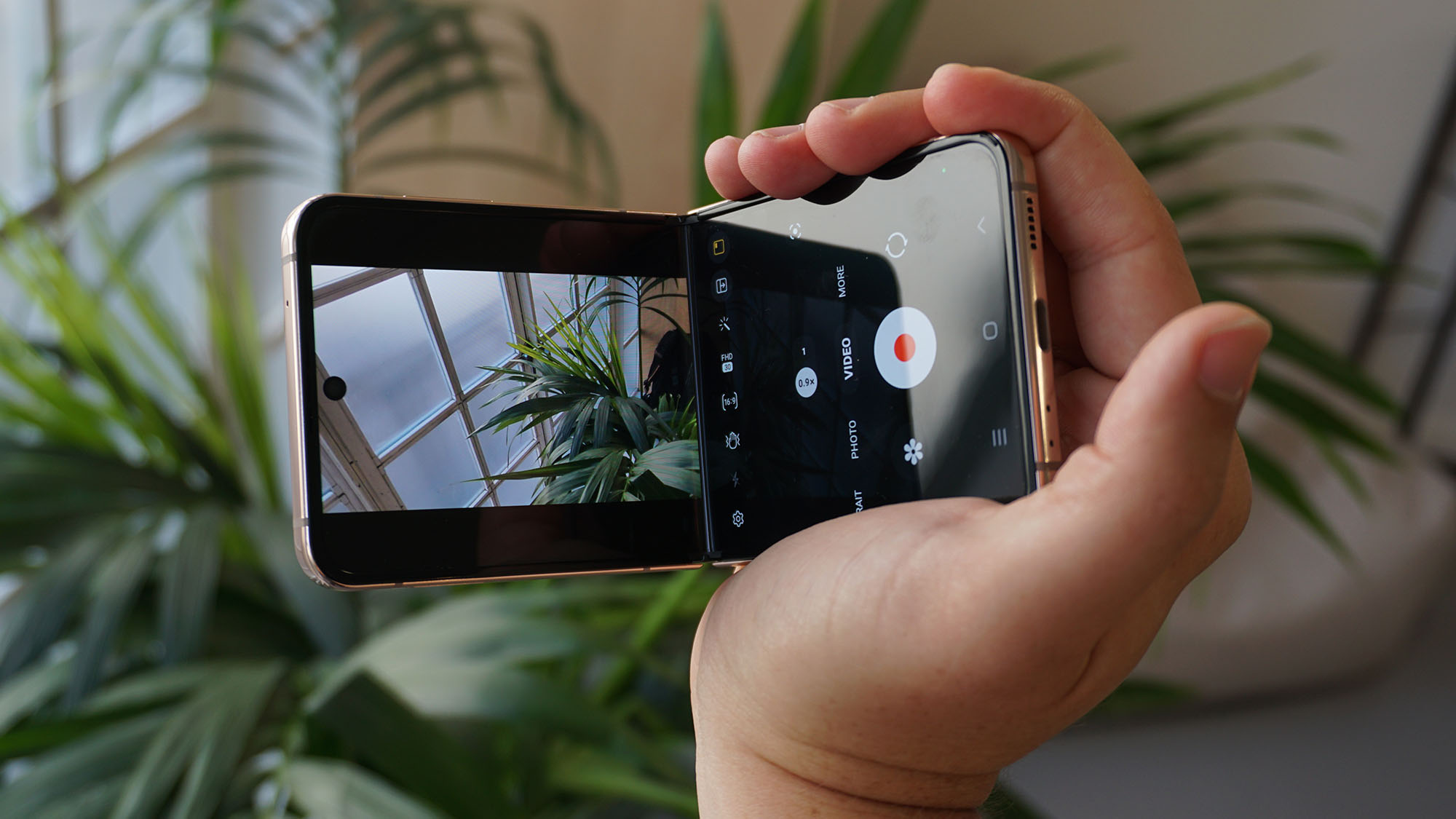
Our initial hands-on time with the Flip 4 didn't unearth any ground-breaking real-world improvements to picture quality, but we couldn't exactly stroll out the door of the company's press preview with a pre-release device in-hand to put it to the test. We'll have a better idea come the full review, though.
Samsung promises brighter stills and videos (by up to 65%) from the main snapper, thanks to larger pixels (1.8µm, up from 1.4µm previously) on that 12MP primary sensor, while the rest of the camera hardware appears unchanged.
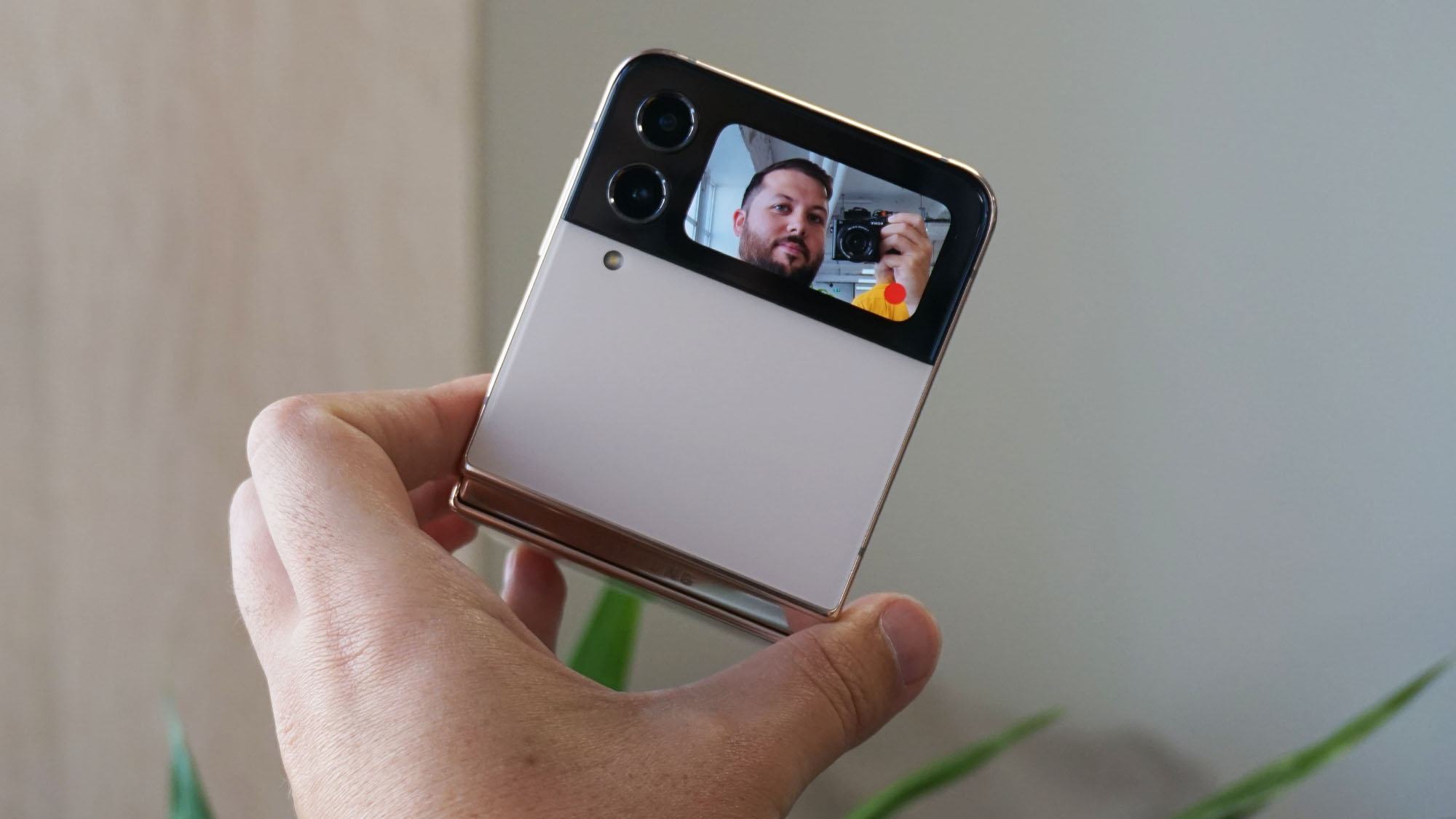
Both OIS (optical image stabilization) and VDIS (video digital image stabilization) have been improved, with the latter being particularly handy in light of the new FlexCam feature: designed to properly orient the UI when holding the phone like a 90s camcorder, whilst the hinge is folded to a 90-degree position.
The cover display experience has been expanded, meaning you can jump through aspect ratios, grab quick shots – including portrait photos – and start shooting video on the cover display, while unfolding and switching to the main display without interrupting recording.
Early verdict
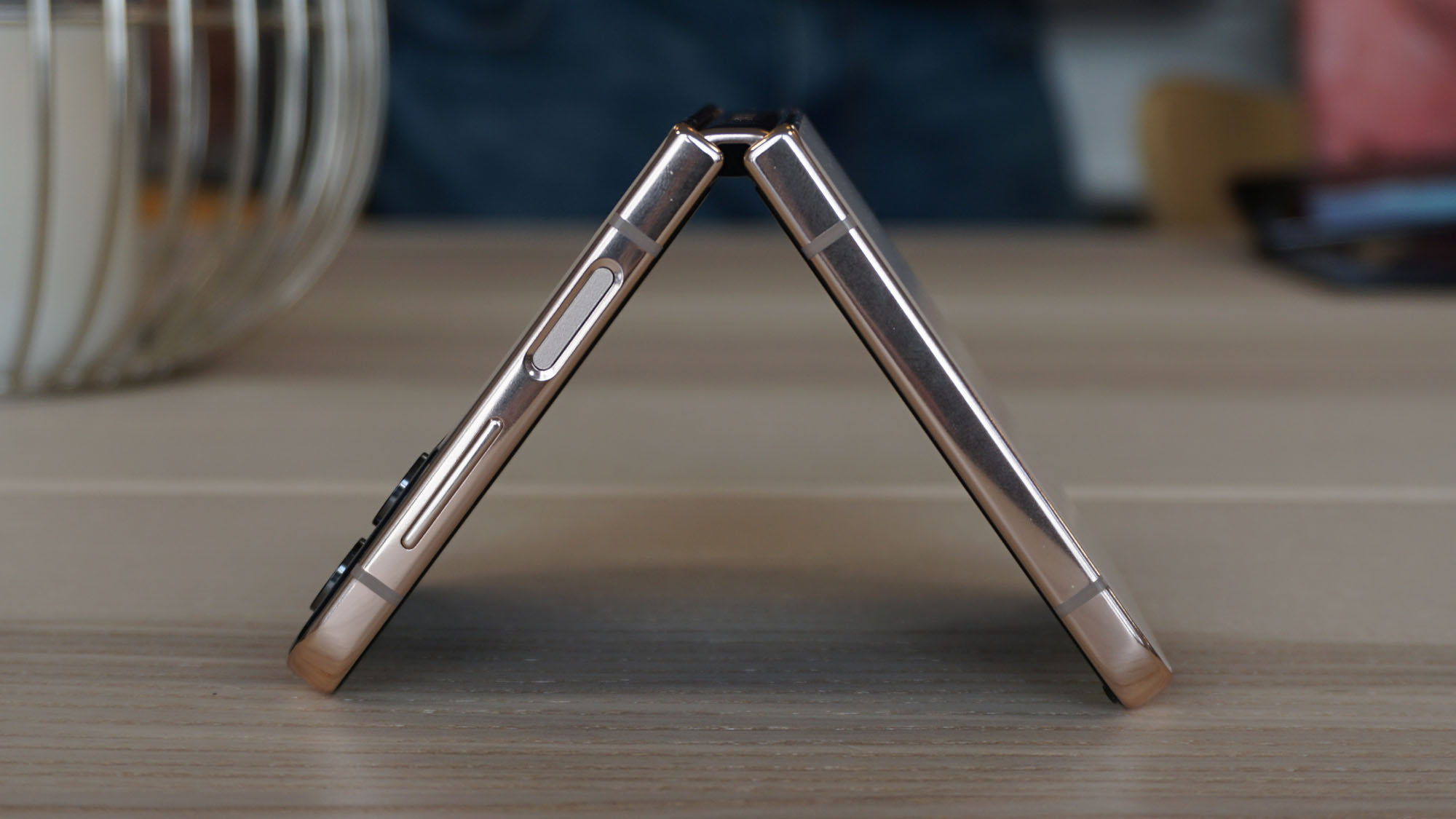
- Empty list
The Samsung Galaxy Z Flip 4 looks and feels like its predecessor but comes dressed with a smattering of small improvements that demonstrate Samsung's ability to listen to its users.
While existing Z Flip 3 owners shouldn't feel left behind based on the additions and enhancements its successor offers, for anyone else looking to make the move to a modern foldable, even with the slight year-on-year price hike in some markets, the Z Flip 4 still looks like the best current-gen clamshell for the price.
Samsung has definitely left plenty of wiggle room for the Flip 5 (or whatever it'll be called), however, with bigger camera hardware advancements, higher resolution displays, dust resistance and faster charging all areas that it'd be great to see more improvement on.
0 comments:
Post a Comment